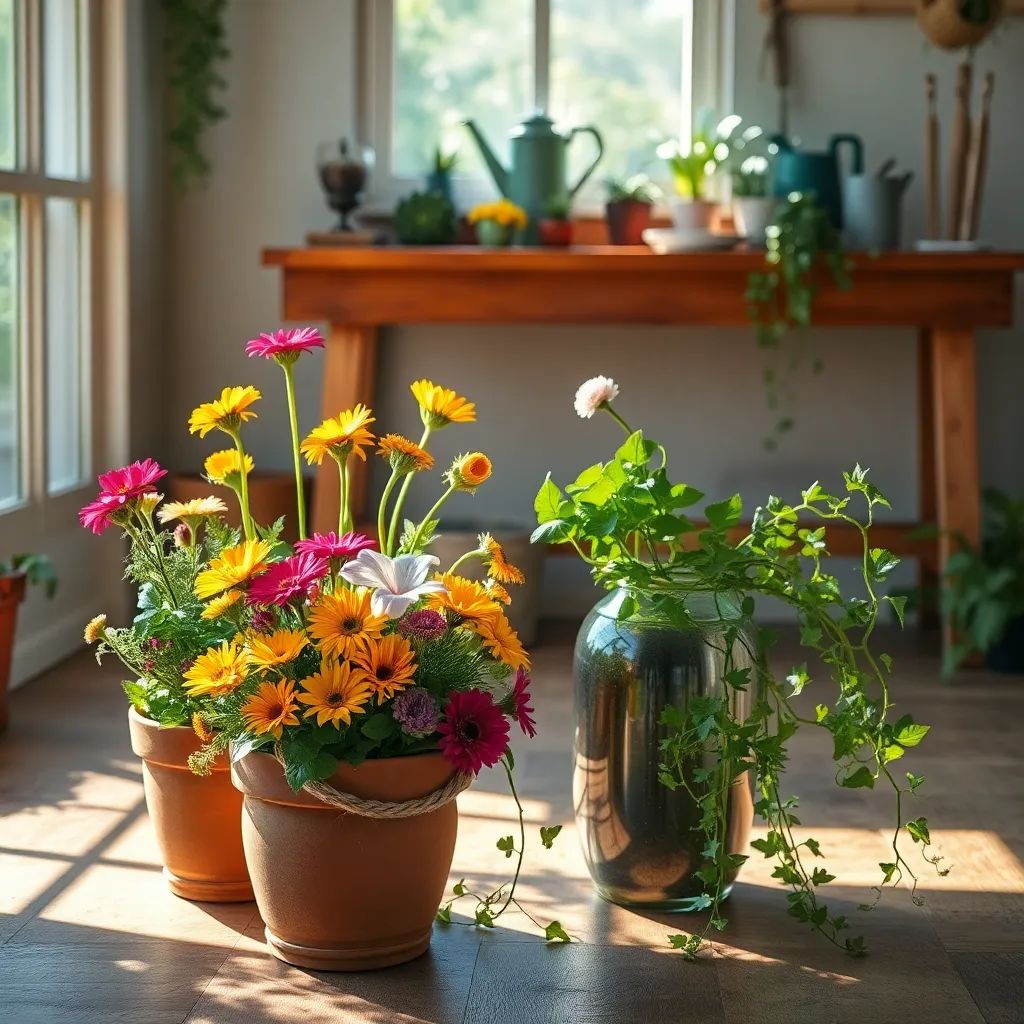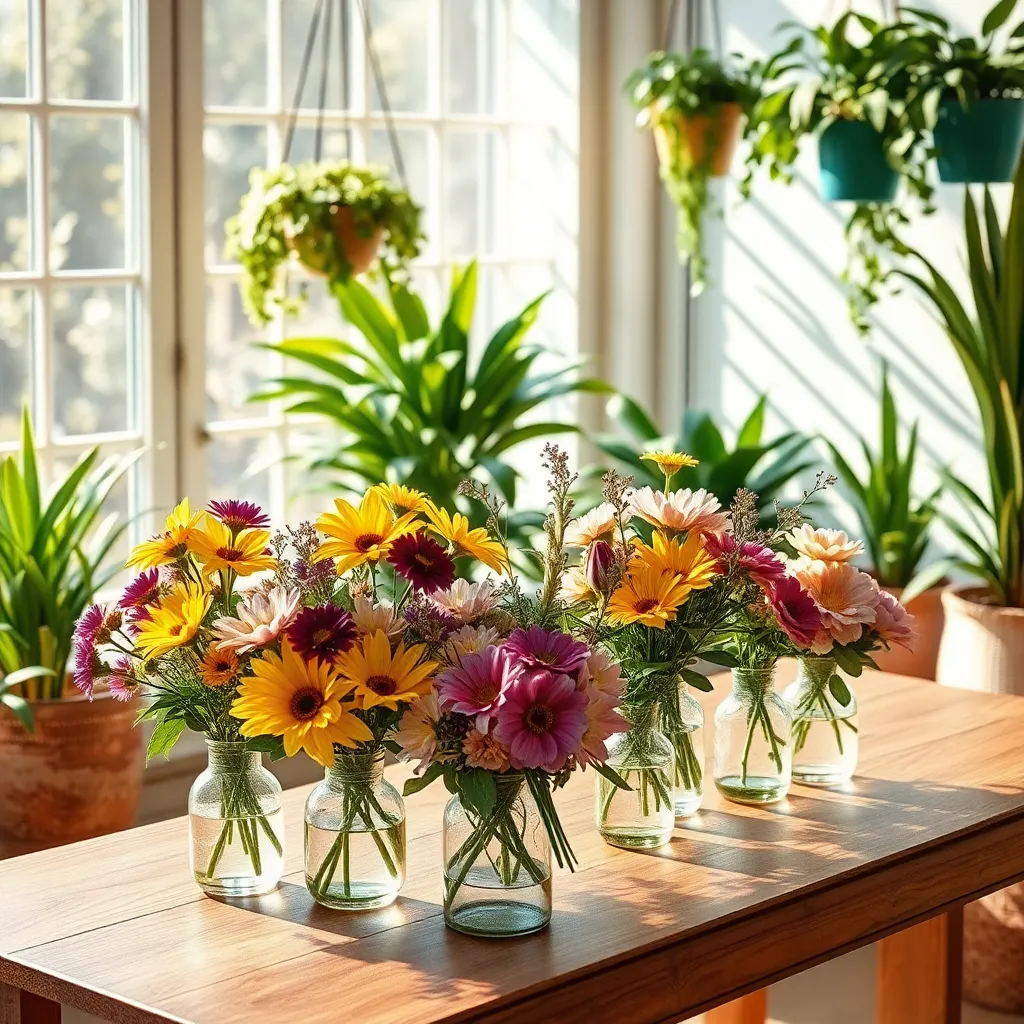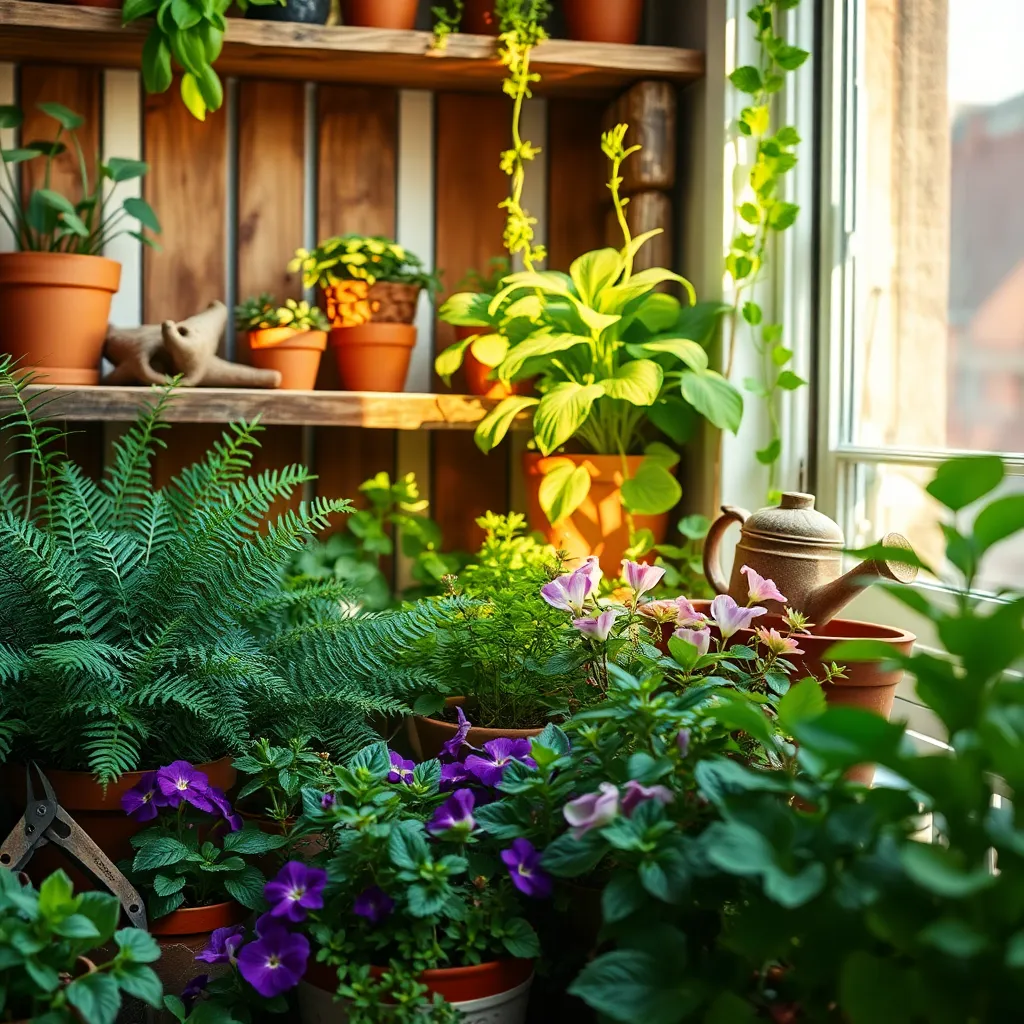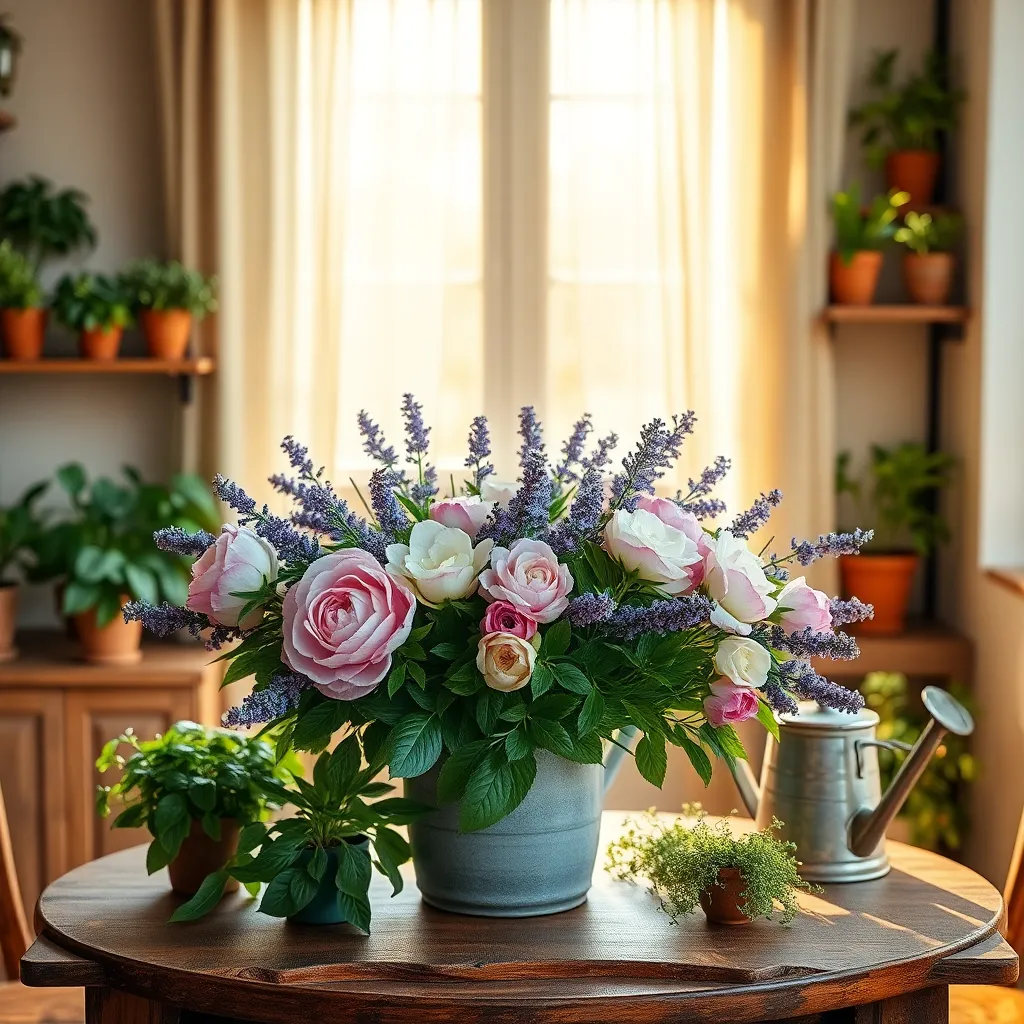In the world of gardening, where the line between art and nature blurs beautifully, creating stunning flower arrangements for your indoor garden is both a joy and a craft. Whether you’re a green-thumbed novice or a seasoned gardener, the allure of bringing nature’s vibrant palette into your home can transform any space into a living masterpiece. The art of arranging flowers isn’t just about aesthetics; it’s about fostering a deeper connection with the natural world and inviting its serenity into your daily life.
For beginners, venturing into the realm of indoor flower arrangements can be a delightful adventure, full of learning and creativity. You’ll discover the essentials of choosing the right flowers, understanding their needs, and arranging them to complement your living space. On the other hand, experienced gardeners will find new inspiration and techniques to refine their craft, exploring advanced concepts such as color theory and spatial design. Together, we’ll delve into the practicalities of maintenance, ensuring your floral displays remain vibrant and healthy throughout the seasons.
In this article, we’ll guide you through the process of selecting the perfect blooms for your indoor oasis, considering factors like lighting, humidity, and bloom cycles. You’ll learn how to create arrangements that reflect your personal style while enhancing the ambiance of your home. With our tips and insights, you’ll be well-equipped to craft floral compositions that not only capture the eye but also nurture the soul. So, let’s embark on this botanical journey together, where each petal and leaf becomes a brushstroke in your unique tapestry of indoor beauty.
Choosing Flowers for Indoor Spaces

When choosing flowers for indoor spaces, it’s crucial to consider the light conditions of your home. Flowers like African violets and peace lilies thrive in low light, making them ideal for dimmer rooms.
For areas with brighter light, try growing orchids or succulents, which can handle more intense sunlight. Place these plants near windows to maximize their exposure to natural light.
Consistent care is key to maintaining vibrant indoor flowers. Ensure your plants have well-drained soil, such as a mix of peat and perlite, and water them according to their specific needs—most indoor flowers prefer to dry out slightly between waterings.
Advanced gardeners might consider using a humidity tray for tropical flowers, which require higher humidity levels. Simply place a shallow tray filled with water and pebbles under the pot to increase moisture in the air.
Designing Harmonious Color Schemes

Creating a harmonious color scheme in your indoor garden can transform any space into a visual delight. Start by selecting a color palette that complements the existing decor of your home to maintain a cohesive look.
One technique is to use the color wheel to identify complementary or analogous colors, which ensures a balanced and pleasing arrangement. For instance, pairing violet orchids with yellow marigolds can create a vibrant contrast, while using hues of blue and green offers a more calming effect.
Consider the lighting conditions of your indoor space as they greatly influence how colors are perceived. Rooms with natural sunlight can enhance the vibrancy of warm-toned flowers, while cool colors might thrive better in areas with less direct light.
When planning your arrangement, include both foliage and flowers to add texture and depth. Foliage plants like ferns or peace lilies not only complement colorful blooms but also require similar care, such as moderate watering and well-draining soil.
Experiment with different flower heights and shapes to add interest and dimension to your arrangement. Taller plants like amaryllis can provide a striking focal point, while shorter, bushier plants such as African violets fill in gaps and offer a lush backdrop.
Finally, remember that maintaining a harmonious color scheme involves regular care and attention. Rotate plants to ensure even growth and consider seasonal changes by swapping out flowers to keep your indoor garden looking fresh and dynamic year-round.
Arranging Techniques for Small Areas

Maximizing a small space for indoor gardening can be both a challenge and a rewarding endeavor. Begin by selecting plants that thrive in compact areas, such as succulents, ferns, or small orchids, which are perfect for indoor environments.
Positioning is crucial when dealing with limited space, so use vertical arrangements to your advantage. Consider installing shelves or hanging baskets to create layers, allowing you to grow more plants without taking up valuable floor space.
Choosing the right containers is also important; opt for pots with drainage holes to prevent root rot, and select sizes that fit the scale of your space. Lightweight materials like plastic or resin can make rearranging easier, allowing you to experiment with different layouts.
Lighting plays a significant role in the success of your indoor garden, and small spaces can often lack natural light. Use LED grow lights to supplement sunlight, ensuring your plants receive the necessary light for photosynthesis, especially during shorter winter days.
Caring for Indoor Flower Arrangements

To keep your indoor flower arrangements vibrant, start by choosing the right type of flowers for your space. Select blooms that thrive in indoor conditions, such as peace lilies, orchids, or African violets, which prefer indirect sunlight and moderate humidity.
Watering is crucial for maintaining the freshness of your indoor floral display. It’s important to check the moisture level of the soil frequently, and water only when the top inch feels dry to the touch, ensuring you don’t overwater.
Fertilizing your indoor flowers can greatly enhance their growth and blooming potential. Use a balanced liquid fertilizer every 4-6 weeks, reducing the frequency during the winter months when plant growth typically slows.
Light levels can significantly impact the health of your indoor arrangements. Position your arrangements near windows with filtered light, and rotate them weekly to ensure even light exposure and prevent leaning.
For advanced care, consider incorporating a humidity tray to maintain optimal moisture levels. Fill a shallow tray with pebbles and water, placing your plant pots on top to boost humidity without direct contact with the water.
Enhancing Atmosphere with Fragrant Blooms

Creating an inviting atmosphere indoors can be easily achieved by incorporating fragrant blooms into your flower arrangements. To start, consider using plants like jasmine and gardenias, which are well-known for their intense and pleasing scents.
When selecting fragrant flowers, choose those that thrive in indoor environments with indirect sunlight. *For instance, place your jasmine in a spot that receives bright, filtered light to ensure vigorous growth and abundant blooms.*
Proper watering is essential for maintaining the fragrance and health of these plants. *Jasmine, for example, requires consistent moisture; water it thoroughly whenever the top inch of soil feels dry.*
To enhance fragrance, consider the soil and feeding requirements of your chosen plants. *Use a rich, well-draining potting mix and feed with a balanced, water-soluble fertilizer every two weeks during the growing season.*
Advanced gardeners might experiment with blending different fragrant blooms for a layered scent experience. *Combining the soft notes of lavender with the more robust aroma of gardenias can create a delightful olfactory tapestry.*
Conclusion: Growing Success with These Plants
In exploring the delightful world of ‘Flower Arrangements for Indoor Gardens,’ we’ve uncovered five key relationship concepts: the importance of nurturing and care, the art of communication through gestures, the balance of individual growth within a partnership, the beauty of adapting to change, and the power of shared creativity. Just as we thoughtfully arrange flowers to create harmonious beauty, so too can we cultivate our relationships with intention and love.
As a practical next step, take a moment today to create a small flower arrangement with your partner or a loved one. Let it serve as a symbol of your shared journey and commitment to nurturing your relationship.
Remember, relationships flourish when tended to with care and creativity. Bookmark this article as a handy resource to revisit these concepts and inspire new ways to strengthen your bonds.
Looking forward, imagine the endless possibilities of relationship success as you apply these insights to your daily life. With mutual effort and creativity, your relationships can bloom beautifully, just like a well-tended indoor garden. Save this article, and let it be your guide to nurturing lasting love and connection.

